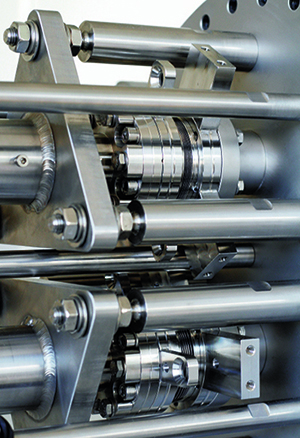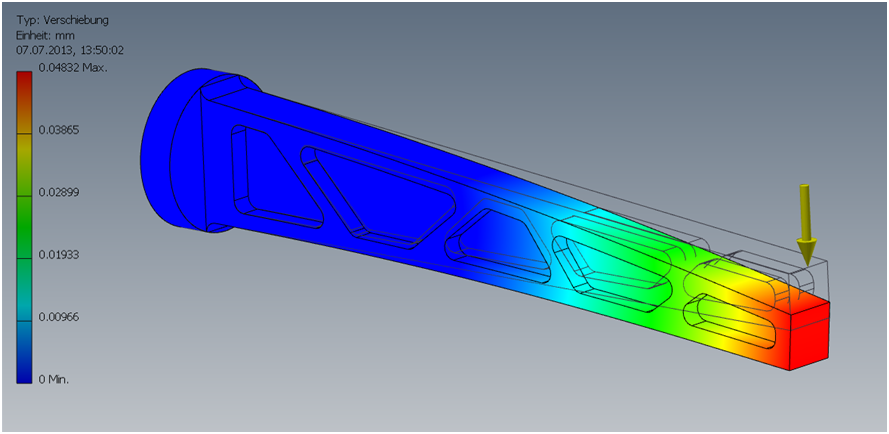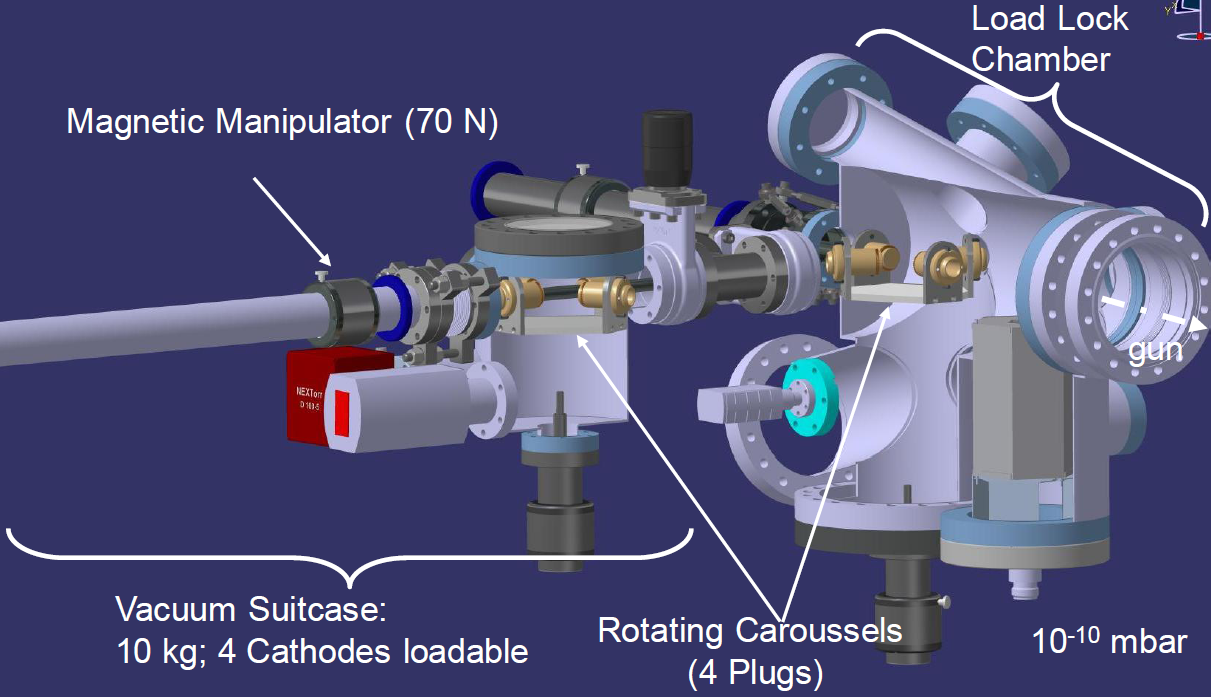Newsletter
Subscribe to our newsletter for new product, product updates and special offer.
Unsubscribe if you would like to quit our list of recepients.
Subscribe to our newsletter for new product, product updates and special offer.
Unsubscribe if you would like to quit our list of recepients.
 CH Switzerland
CH SwitzerlandFerrovac AG
Thurgauerstrasse 72
CH 8050 Zürich
Phone: +41 44 273 16 38
E-mail link?
Website http://www.ferrovac.com/
Service contact:
Phone: +41 44 273 16 38
E-mail link?
Our usual email response time
is 1-2 business days
 WORLDWIDE eCommerce only
WORLDWIDE eCommerce only
UHV Store LLC
Bachweg 6
5467 FISIBACH
SWITZERLAND
E-mail link?
Website link?
 GB United Kingdom &
GB United Kingdom &  IE Ireland
IE IrelandLewVac
Unit F2 Ote Hall Farm
Janes Lane
Burgess Hill
RH15 0SR
Phone: +44 (0)1444 233372
Fax: +44 (0)1444 233392
E-mail link?
Website link?
 CN China
CN ChinaBE-INSTRUMENTS TRADING CO., LTD.
北京埃伯仪器贸易有限公司
13th Floor, Room 10, Air China Plaza
No. 36, Xiaoyun Road
Chaoyang District, Beijing (P.R. China)
地址:北京市朝阳区霄云路36号国航大厦13层10号房间
Phone: +86 (0)10-806 983 56
Fax: +86 (0)10-806 983 59
E-mail link?
Website link?
 JP Japan
JP JapanTEC Corporation
Keigo Matsuda
7-19-26-213 Oizumigakuen-cho
Nerima-ku, Tokyo 178-0061, JAPAN
Phone: +81-3-5935-1060
Fax: +81-3-5935-1070
E-mail link?
Website link?
 KR Korea, Republic of
KR Korea, Republic ofINA Korea Co.,Ltd.
DK B/D, 27-4, Gongduck-Dong,
Mapo-Gu, Seoul 121-020 Korea
Tel : +82-2-714-5456
Fax: +82-2-714-5457
E-mail link?
 SG Singapore &
SG Singapore &  MY Malaysia &
MY Malaysia &  ID Indonesia
ID IndonesiaARC Sciences Pte Ltd.
12 Lorong Bakar Batu, #06-07
Singapore 348745
Phone: +65 6296 7828
Website: link?
 TW Taiwan
TW TaiwanShumotek Corp.
Add. No. 111, Jiabei 1st St.,
Zhunan Township
Miaoli County 35058, Taiwan (R.O.C.)
Cellphone : +886-919-706-759
Phone: +886-37-612810
Fax: +886-37-612811
E-mail link?
Website: link?
 US United States
US United StatesUnited Mineral & Chemical Corp.
160 Chubb Avenue, Suite 206
Lyndhurst, NJ 07071
Tel: +1 201-507-3300
Cell: +1 973-864-0537
E-mail link?
Website: link?
 AU Australia &
AU Australia &  NZ New Zealand
NZ New ZealandFerrovac AG
Thurgauerstrasse 72
CH 8050 Zürich
Phone: +41 44 273 16 38
E-mail link?
Website: http://www.ferrovac.com/
All other countries, please contact our headquarters in Switzerland
 June 2015
June 2015
The HOENCOL energy collimator presented here was developed for the Swiss Free Electron Laser facility (SwissFEL) in close collaboration with the Paul Scherrer Institute. It consists of four magnetic dipoles with a collimator block system installed between the two central dipoles.
The energy collimator acts as a filter to protect the undulator line from parasitic electrons.
In order to vary the energy acceptance of the system, two motorized linear drive units move the shielding blocks along the horizontal axis perpendicular to the direction of the e-beam.

In order to resolve mechanical stress in the process of opening/closing the gap with the linear drives, possible angular errors are compensated by the alignment units. These consist of massive triangular plates held by three sturdy steel studs which are used for the initial alignment.
The edge welded belows allow for the necessary angular freedom.

Due to potential electromagnetic disturbances caused by the stepper motors, these are placed 0.5 m away from the electron beam axis.
With an accuracy of less than 1 micron, an integrated linear encoder measures the linear displacement of the alignment unit.
Linear force is transmitted via torque shafts to protect the alignment units' belows from distortion.



Schematic Layout of SwissFEL Aramis beamline (left) and setup of various components on it's girder (right), showing the position of the energy collimator.
 Energy Collimator Specifications
Energy Collimator SpecificationsIn order not to affect the beam quality, the surface and positioning of the two motorized shielding blocks must fulfil the high requirements specified below. The support beams and their supporting structure were laid out with an extreme stiffness using FEM (finite element method) to optimize shape and pocket geometry.
 This simulation shows a support beam hanging freely without any base and with a 7kg load. In an overscaled representation, the displacement of the tip is calculated to be less than 0.05 mm.
This simulation shows a support beam hanging freely without any base and with a 7kg load. In an overscaled representation, the displacement of the tip is calculated to be less than 0.05 mm.


 May 2015
May 2015
The PCPLS is a novel cathode preparation and loading system designed and built for the Swiss Free Electron Laser facility (SwissFEL) at PSI.
It enables the preparation and exchange of the RF photogun's cathode without breaking the UHV chain. A prerequesite for maintaining the quality of the cathode surface, which is essential.
The SwissFEL electron source is an RF photo-injector in which the photo-cathode plug can be exchanged, all under UHV conditions. Without a load-lock, the cathode exchange takes about one week and the cathode surface gets contaminated in the atmosphere during installation, leading to unpredictable quantum efficiency (QE) fluctuations.
These time and contamination issues motivated the construction of a load lock system to prepare and insert cathodes into the photo-injector, doing away with the need for venting the gun. Now using the vacuum suitcase for the cathode exchange between the preparation chamber and the gun loading chamber, the exchange requires only half a day (including RF conditioning of the new cathode, tested on Cu_17).
The cathode loading system consists of three chambers:

This three-part system allows the preparation of the cathode surface with methods like annealing. The QE can be checked with a laser and the plug can be inserted into the gun without breaking the vacuum. This will eventually allow the use of semiconductor cathodes like Cs2Te.
The PCPLS system was successfully installed and tested at the SwissFEL injector Test Facility (SITF).
 A magnetically coupled manipulator arm can grab the plug (right) out of a parking holder and safely transfer it linearly over half a meter distance under ultra high vacuum. In each of the 3 chambers a rotatable carousel (below) can hold up to 4 cathode plugs.
A magnetically coupled manipulator arm can grab the plug (right) out of a parking holder and safely transfer it linearly over half a meter distance under ultra high vacuum. In each of the 3 chambers a rotatable carousel (below) can hold up to 4 cathode plugs.

 The figure to the right shows how the vacuum suitcase is connected to the gun loading chamber. The fine adjustment knob of the magnetically coupled manipulator keeps the cathode pushed into the gun during operation.
The figure to the right shows how the vacuum suitcase is connected to the gun loading chamber. The fine adjustment knob of the magnetically coupled manipulator keeps the cathode pushed into the gun during operation.
 The quantum efficiency of the cathodes depends on three theoretical parameters: the work function, the surface reflectivity and the local electric field (for a given laser wavelength). Contamination and roughness directly affect these parameters. The PPLS enables optimized preparation procedures and actions for the cathodes.
The quantum efficiency of the cathodes depends on three theoretical parameters: the work function, the surface reflectivity and the local electric field (for a given laser wavelength). Contamination and roughness directly affect these parameters. The PPLS enables optimized preparation procedures and actions for the cathodes.
Cathode surface cleaning is done in the preparation chamber. The most effective way to remove surface contaminants is to heat up the cathode plug for several hours. The preparation chamber is equipped with a heating rod which can be directly inserted into the back of the cathode plug. Thanks to the vacuum suitcase, the cathode is protected from exposure to atmosphere during transfer. Therefore preparation processes such as Dicaesium Telluride vapor deposition can be included.

The deposition chamber is equipped with an easily exchangeable aperture in front of the cathode (for variation of the deposition area)
and a quartz micro-balance. The cathode is loaded from the left and the evaporation source from the right.


If you would like more information please contact us with any questions you may have at link?.